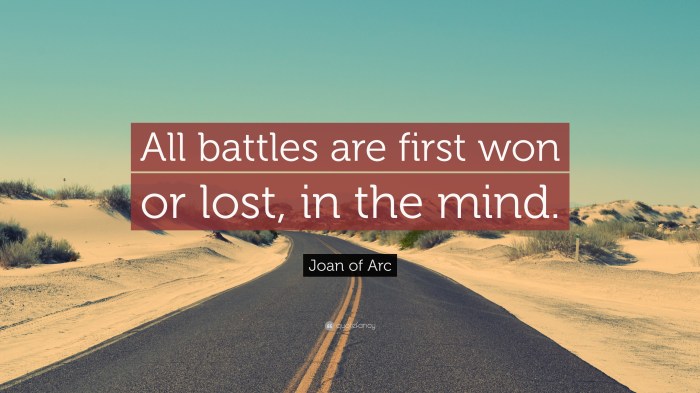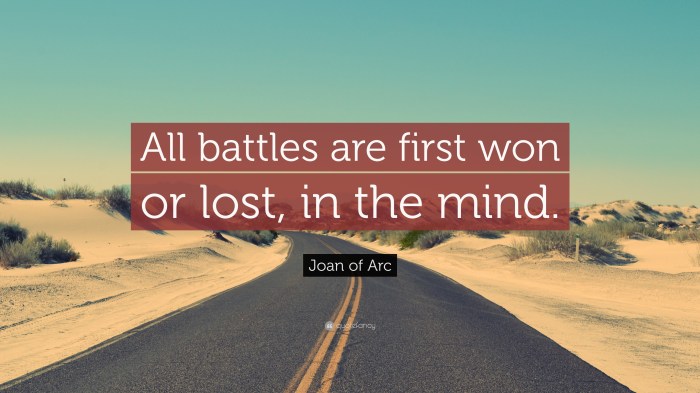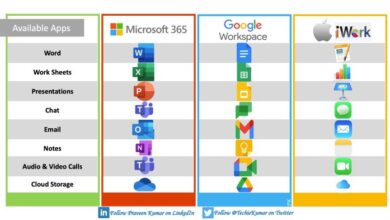
Did AOL win the IM battle but lose the war? This question delves into the rise and fall of America Online, a company that once dominated the internet landscape. We’ll explore AOL’s initial dominance, the rise of the internet, and the intense competition it faced. From innovative strategies to changing user preferences, we’ll analyze the factors that led to AOL’s decline, ultimately losing the larger war for internet supremacy.
AOL’s early success was built on a unique blend of user-friendly interfaces and aggressive marketing campaigns. This early period saw a rapid expansion in internet users, largely thanks to AOL’s simplified approach. The following years witnessed a complex interplay of new technologies, evolving user needs, and the relentless competition from emerging internet service providers. This analysis will also look at the pricing models and business strategies adopted by AOL, comparing them with competitors, ultimately offering a deeper understanding of its ultimate demise.
AOL’s Initial Internet Dominance
America Online (AOL) wasn’t just another internet service provider; it was a cultural phenomenon. In the early 1990s, AOL transformed the way millions interacted with the internet, moving it from a niche technology to a mainstream activity. Its rise was meteoric, and its impact on the online world was profound. This section will explore the factors behind AOL’s early success, focusing on its unique user experience and market positioning.AOL’s early dominance was built on a combination of innovative marketing, user-friendly design, and a compelling value proposition.
It understood that the internet, while powerful, was also intimidating to newcomers. AOL successfully addressed this by providing a simple, graphical interface that made navigating the web intuitive for those unfamiliar with complex command lines. This intuitive approach was a significant differentiator compared to competitors who relied on text-based interfaces.
AOL’s Early Success Factors
A key factor in AOL’s rise was its aggressive marketing campaign. The company successfully positioned itself as the gateway to the internet, creating a sense of excitement and exclusivity around online access. AOL’s marketing strategy effectively targeted a broad demographic, including those who were hesitant or intimidated by the complexity of the internet. The company’s initial strategy focused on bundled offerings with a compelling value proposition: dial-up internet access coupled with entertainment and community features.
User Experience Compared to Competitors
AOL’s user experience was a significant differentiator. Its graphical interface and pre-packaged content made it far easier to navigate than competitors’ text-based interfaces. AOL’s proprietary software offered a simplified, visually appealing online experience. Competitors often relied on more complex command-line interfaces, which proved a barrier to entry for many potential users. The AOL experience was not just about access; it was about community and entertainment.
Comparison of Initial Offerings, Did aol win the im battle but lose the war
| Feature | AOL | Competing ISPs (e.g., CompuServe, Prodigy) |
|---|---|---|
| Interface | Graphical, user-friendly | Text-based, often requiring commands |
| Content | Pre-packaged content (news, games, chat) | Often required users to actively seek out content |
| Community | Built-in chat rooms, forums | Limited or less integrated community features |
| Marketing | Aggressive, focused on broad appeal | Varied, often targeted niche audiences |
| Price | Competitive bundled packages | Often higher standalone costs for access |
The table above illustrates the key differences in initial offerings. AOL’s user-friendly design and pre-packaged content proved highly attractive to a broad range of users, driving significant market share gains. The integration of community features further strengthened its position as a central hub for online interaction.
The Rise of the Internet: Did Aol Win The Im Battle But Lose The War
The internet’s explosive growth during AOL’s reign wasn’t just about dial-up connections; it was a fundamental shift in how people interacted, communicated, and accessed information. AOL, while dominant, couldn’t control the unstoppable force of technological innovation and evolving user demands. The internet, a decentralized network, was simply too dynamic to be confined to a single provider.The internet’s expansion during this period was fueled by a confluence of factors, including increasing computing power, decreasing hardware costs, and the development of more user-friendly interfaces.
This, coupled with the increasing demand for online access, led to a broader range of internet service providers and access methods, making the market more competitive and forcing AOL to adapt or risk being left behind.
New Technologies and Access Methods
The emergence of competing technologies and access methods dramatically altered the internet landscape. The introduction of faster broadband connections, such as cable modem and DSL, offered significant improvements over dial-up. This marked a crucial turning point, allowing for more robust applications and experiences, and fundamentally altering the user experience. This shift was also spurred by the development of more advanced internet protocols and architectures, further enabling the growth and diversification of internet applications.
This era also witnessed the increasing prevalence of personal computers and the development of more sophisticated web browsers. These factors together created a more dynamic and accessible internet, opening up a world of possibilities for users beyond what AOL’s dial-up service could provide.
Comparison of Internet Service Providers
The internet service provider (ISP) market during this period saw a significant diversification of offerings. Different providers focused on various aspects of service, catering to different user needs and budgets. Some prioritized speed and bandwidth, while others emphasized ease of use and customer support. The competition between these providers was fierce, driving innovation and influencing the overall evolution of the internet.
Table: Internet Service Providers and Offerings
| Provider | Access Method | Typical Speed (Kbps/Mbps) | Monthly Price (USD) | Key Features |
|---|---|---|---|---|
| AOL | Dial-up | 56 Kbps | $20 – $30 | Integrated email, online chat, newsgroups, and initial web access |
| CompuServe | Dial-up | 56 Kbps | $20 – $30 | Early online community with extensive bulletin boards and information resources |
| America Online | Dial-up | 56 Kbps | $20 – $30 | Wide selection of online services, including email, instant messaging, and news |
| Cable Modem Providers (e.g., Comcast) | Cable Modem | 1 Mbps – 10 Mbps | $30 – $60 | Faster speeds compared to dial-up, often integrated with television service |
| DSL Providers (e.g., AT&T) | DSL | 1 Mbps – 20 Mbps | $30 – $60 | Faster speeds than dial-up, often more reliable connection |
The Internet Battle: AOL vs. Competitors
AOL’s initial dominance in the burgeoning internet world was undeniable. However, the rise of the internet wasn’t a one-horse race. Other companies, with different strategies and strengths, were vying for market share. Understanding the competitive landscape helps us appreciate the complexity of AOL’s journey and its ultimate fall from grace.The internet boom of the 1990s and 2000s was a period of rapid innovation and fierce competition.
Many companies entered the fray, each attempting to carve out a niche and capture a portion of the growing online audience. AOL, while a leader, wasn’t immune to the challenges posed by these rivals. Their strategies, strengths, and weaknesses were crucial factors in shaping the internet’s evolution.
Key Competitors of AOL
AOL faced stiff competition from a diverse range of companies, each with unique offerings and advantages. These competitors included innovative dial-up providers, pioneers in search technology, and early entrants into online services. Understanding their strategies provides valuable context for analyzing AOL’s position and performance. Some of the most prominent competitors included CompuServe, Prodigy, and eventually, the emergence of broadband internet access.
These companies brought diverse approaches to the market, offering varying levels of service, features, and pricing. For instance, CompuServe was known for its extensive online community features, while Prodigy had strong ties to the entertainment industry. These characteristics played a significant role in their respective success and failure in the internet landscape.
Comparing AOL’s Strategies to Competitors
AOL’s strategy relied heavily on its bundled service model, integrating email, online chat, and news into a comprehensive package. This approach, while initially successful, proved less adaptable as the internet evolved. Other competitors, like CompuServe and Prodigy, focused on specific areas, such as community forums or entertainment content. This specialization allowed them to develop dedicated user bases and build strong brand loyalty, something AOL struggled with as its offerings became less unique.
While AOL might have had a brief moment of glory in the early internet wars, it ultimately lost out in the long run. Today, companies like Cybersource are innovating, as evidenced by their announcement of enhanced e-commerce technology, cybersource announces enhanced e commerce technology. This highlights the ever-evolving landscape of online commerce, demonstrating that even temporary victories in the digital arena don’t guarantee lasting success in the long game.
So, the AOL story serves as a reminder that winning a battle doesn’t necessarily mean winning the war.
Strengths and Weaknesses of Key Competitors
The following table provides a comparative overview of AOL and its key competitors, highlighting their strengths and weaknesses:
| Company | Strengths | Weaknesses |
|---|---|---|
| AOL | Extensive user base, bundled services, initial market dominance, strong brand recognition. | Slow to adapt to changing technologies, inflexible business model, struggles with innovation in later years, overreliance on dial-up, increasing customer churn. |
| CompuServe | Established online community, early adopter of online services, rich content library. | Limited market penetration compared to AOL, slow to capitalize on the growing popularity of the web, unable to match AOL’s aggressive marketing strategies. |
| Prodigy | Strong entertainment focus, tie-ins with major media companies, early adopter of online services. | Limited user base, reliance on partnerships that did not always align with market demands, struggles with innovation, limited reach compared to competitors. |
| Others (e.g., early search engines, broadband providers) | Specialization in search, access to faster internet, greater control over user experience, innovation in specific areas. | Limited initial user base, higher entry costs, less established brand recognition, challenges in user acquisition. |
AOL’s Strategies and Tactics
AOL’s meteoric rise to internet dominance wasn’t simply a matter of luck. It was a carefully orchestrated campaign that leveraged innovative strategies and tactics to capture a massive user base. Understanding these strategies provides valuable insights into the early internet landscape and the competitive pressures of the time. The company’s approach to the market was crucial to its initial success.AOL’s strategy was multifaceted, focusing on both user acquisition and the creation of a compelling user experience.
They understood the need to make the internet accessible and enjoyable for a broad audience, moving beyond the technical limitations and jargon that often deterred potential users. This strategy was critical in expanding the internet’s reach.
Remember AOL’s IM battle? While they might have had a brief moment of glory in the instant messaging arena, ultimately they lost out on the long-term game. Similarly, companies need to look beyond short-term gains and consider the bigger picture. Thankfully, there are forward-thinking companies like absolutefuture com to provide eco friendly holiday returns to help with sustainable practices for the holiday season, which is a win for everyone in the long run.
The takeaway remains the same; winning the small battles doesn’t always translate to winning the war, a lesson AOL, and others, still grapple with today.
Market Approach
AOL’s approach to the market was aggressive and innovative. They recognized the potential of the internet as a platform for communication and entertainment, and they aimed to build a comprehensive service that catered to a wide range of user needs. AOL wasn’t just selling access; they were selling a lifestyle.
Marketing Campaigns and User Acquisition
AOL’s marketing campaigns were designed to create excitement and anticipation around its service. They focused on highlighting the convenience and social benefits of online communication. Free trials, bundled services, and partnerships with dial-up providers were key components of their user acquisition strategy. These strategies effectively tapped into the desire for online connectivity and social interaction, particularly among those who were previously unfamiliar with the internet.
Pricing Models and Business Strategies
AOL employed a subscription-based pricing model. This model allowed them to generate revenue and invest in the development and maintenance of their platform. Their strategy also included partnerships with various service providers, such as online game developers and content creators. This approach created a valuable ecosystem that attracted both users and partners.
Product Offerings and Pricing
AOL offered a suite of products and services, each with a unique pricing structure. This diversity aimed to meet the varied needs and budgets of its user base.
| Product | Description | Pricing |
|---|---|---|
| AOL Instant Messenger (AIM) | Real-time chat service | Included with AOL subscription |
| AOL Mail | Web-based email service | Included with AOL subscription |
| AOL Games | Collection of online games | Included with AOL subscription |
| AOL News and Information | News aggregation and information services | Included with AOL subscription |
| AOL.com | Web portal | Included with AOL subscription |
These diverse product offerings, coupled with their subscription-based pricing model, allowed AOL to generate significant revenue and maintain a profitable business model.
The Internet “War” and Shifting Paradigms
AOL’s initial dominance in the dial-up internet era was undeniable. However, the landscape shifted dramatically as the internet evolved beyond its early, relatively exclusive phase. This shift, driven by technological advancements and changing user expectations, fundamentally altered the competitive playing field. The rise of broadband, the proliferation of personal computers, and the emergence of alternative internet service providers (ISPs) all contributed to a paradigm shift that proved challenging for AOL to navigate.The evolution of internet access profoundly impacted AOL’s market position.
Dial-up, while initially successful, became increasingly cumbersome and slow as user demands grew. Broadband internet, with its significantly faster speeds, offered a compelling alternative, appealing to users seeking a more seamless and responsive online experience. This shift towards broader internet access, coupled with the rise of the World Wide Web, gradually eroded AOL’s stronghold. Users, now empowered by choice and speed, were less reliant on a single provider.The impact of the internet’s growth and user adoption was significant on the entire internet access landscape.
The transition from a limited, dial-up-centric internet to a ubiquitous, broadband-driven environment dramatically altered the rules of engagement. This expansion also encouraged the rise of new players, such as cable and DSL providers, further complicating AOL’s strategy and highlighting the need for adaptation.
Key Milestones in Internet Evolution and Their Effect on AOL
The internet’s journey from a niche technology to a global phenomenon was marked by several key milestones, each with a distinct impact on AOL’s standing.
| Milestone | Impact on AOL |
|---|---|
| 1990s: Rise of the World Wide Web | The web’s user-friendly interface and vast information resources began attracting a wider audience, creating a demand for more accessible and faster internet access. AOL, while initially benefiting from this trend, faced challenges as its dial-up infrastructure became a bottleneck compared to emerging broadband technologies. |
| Late 1990s: Emergence of Broadband Internet | The introduction of faster broadband technologies like cable and DSL offered a significant alternative to AOL’s dial-up service. Users could now experience the internet with dramatically improved speed and responsiveness, creating a major challenge for AOL’s market share. |
| Early 2000s: Proliferation of Personal Computers | The increased availability and affordability of personal computers made internet access more accessible to the general public. This expanded the potential customer base for internet service providers but also introduced new competitors to the market. AOL, while a familiar name, found its dominant position increasingly challenged. |
| Mid 2000s: Rise of Free Internet Services | The appearance of free internet services, often bundled with other services, created a new competitive environment. These options offered an alternative to paid subscriptions, making users more discerning in their choice of providers. AOL had to contend with the free and affordable model to retain customers. |
AOL’s Decline and Legacy

AOL’s meteoric rise to internet dominance was ultimately followed by a dramatic fall. The company’s once-unrivaled position was eroded by a combination of factors, including the evolving technological landscape and a failure to adapt to the changing needs of online users. This section delves into the key reasons behind AOL’s decline and its enduring impact on the internet’s evolution.The factors contributing to AOL’s decline were multifaceted.
The company, initially successful due to its user-friendly interface and early market dominance, found itself ill-equipped to compete with the emerging array of choices and innovations in the online world. The changing internet environment and evolving user expectations became crucial factors in AOL’s struggles to maintain its leadership.
Changing Technological Landscape and its Impact
The internet landscape was rapidly transforming. The rise of broadband internet, characterized by significantly faster speeds and more reliable connections, presented a major challenge to AOL’s dial-up service. Broadband’s greater capacity and faster speeds allowed users to experience a vastly superior online experience, making dial-up seem sluggish and outdated. This shift directly affected AOL’s user base as users migrated to faster and more convenient options.
The availability of alternatives like cable and DSL internet provided users with significantly enhanced online experiences, leading to a dramatic loss of AOL’s market share.
AOL’s Dial-up Service Demise
AOL’s reliance on its dial-up service, while a key factor in its initial success, became a significant obstacle to its long-term survival. The slower speeds and frequent connection issues associated with dial-up became increasingly unacceptable to users seeking more seamless and rapid online experiences. This inability to adapt to the changing needs of online users, combined with the proliferation of broadband internet, proved fatal for AOL’s dial-up service.
Remember AOL’s early internet dominance? While they might have won some battles in the early days of the web, they ultimately lost the war. It seems like a similar pattern is emerging today, with companies like Hearst and NBC pumping investment into e-commerce firms like hearst nbc pump investment into e commerce firms. This points to a shift in the digital landscape, highlighting the ongoing struggle for relevance in the face of evolving consumer behavior.
Maybe AOL’s mistake was not adapting fast enough, and now other players are trying to learn from history.
The gradual shift towards faster and more reliable internet connections directly impacted AOL’s revenue streams.
A Comparison of AOL’s Stages
| Stage | Key Events | Impact |
|---|---|---|
| Initial Dominance (Early 1990s) | Introduction of user-friendly interface, aggressive marketing, and early market leadership. | Established AOL as a significant player in the emerging internet market. Generated high subscriber numbers and substantial revenue. |
| Competition Emerges (Mid-1990s) | Rise of Netscape Navigator and other competitors. Increasing awareness and availability of other online services. | Increased competition challenged AOL’s market position. Forced AOL to adapt and innovate to retain its user base. |
| Broadband Revolution (Late 1990s-2000s) | Introduction and widespread adoption of broadband internet. Faster speeds and greater reliability. | Eroded dial-up’s popularity, severely impacting AOL’s user base and revenue streams. AOL struggled to transition to the new technology. |
| Decline and Restructuring (2000s-2010s) | Series of acquisitions and restructuring attempts. Continued decline in dial-up subscribers. | AOL experienced a significant decline in user numbers, and revenue. Various attempts were made to re-position AOL in the market, but it failed to regain its former dominance. |
The Importance of Internet Infrastructure

The internet, as we know it, is not a magical entity floating in the ether. It’s a complex network, a massive interconnected system of hardware and software, underpinned by an often-overlooked foundation: infrastructure. Understanding this infrastructure is crucial to grasping the power and limitations of the modern internet. From the physical cables that carry data to the servers that host websites, this intricate web of connections defines the very nature of online experience.The role of internet infrastructure is multifaceted and foundational.
It’s the silent engine that drives the development of internet services and access. Without robust infrastructure, the rich tapestry of online experiences – from streaming videos to conducting financial transactions – simply wouldn’t exist. The ability to connect billions of users, share information at near-instantaneous speeds, and support the constant flow of data relies on a stable and efficient underlying structure.
The evolution of this infrastructure mirrors the evolution of the internet itself.
Internet Infrastructure Evolution
The evolution of internet infrastructure has been a journey from rudimentary beginnings to the sophisticated network we rely on today. Early internet infrastructure was limited in capacity and speed, impacting the range and quality of available services. As technology advanced, so did the ability to transmit and process data, opening doors to new applications and experiences.
Evolution of Infrastructure and its Impact
| Era | Infrastructure Characteristics | Impact on Internet Experience |
|---|---|---|
| Early Internet (1960s-1980s) | Limited bandwidth, primarily text-based communication, reliance on dial-up connections. | Slow speeds, limited access, primarily for research and academic purposes. Information sharing was slower and more cumbersome. |
| The Rise of the Web (1990s) | Increased bandwidth, introduction of the World Wide Web, development of client-server architecture. | Faster access to information, multimedia content became possible, and the web became a global platform for communication and commerce. Early websites often had limited graphics and animation. |
| The Broadband Revolution (2000s) | Broadband connections (DSL, cable modem, fiber optic), increase in processing power. | Enhanced user experience with faster speeds, support for video streaming, online gaming, and multimedia content. E-commerce flourished with reliable and faster connections. |
| The Mobile Internet (2010s-present) | Mobile internet access, wireless technologies, cloud computing, big data analytics. | Accessibility anytime, anywhere, growth of mobile apps, and the rise of social media. The internet became deeply integrated into daily life, supporting social interactions, entertainment, and business. |
Future Trends in Internet Infrastructure
The future of internet infrastructure promises even more advancements. Ongoing research and development are focused on increasing bandwidth, improving network security, and ensuring equitable access for all. The increasing use of 5G and other next-generation technologies is poised to dramatically alter the landscape of internet access and experience. This evolution will bring a new level of speed, reliability, and capacity to the internet, supporting the growing demand for data-intensive applications.
We can anticipate a seamless integration of the physical and digital worlds, further blurring the lines between online and offline experiences.
The Impact on the Digital World
AOL’s journey, from a pioneering internet service provider to a company navigating the evolving digital landscape, left an indelible mark on the world. Its rise and subsequent fall offer a valuable case study, revealing the dynamic nature of the internet and the challenges of adapting to rapid technological advancements. The lessons learned resonate deeply within the industry, shaping strategies and impacting the very fabric of the digital world.AOL’s impact transcended simple technological advancements; it fundamentally altered how people interacted with information, communicated, and conducted business online.
Its rise to prominence, coupled with its eventual decline, provided a compelling narrative of innovation, competition, and the ever-changing digital terrain.
Enduring Effects of AOL’s Rise
AOL’s initial dominance fostered a crucial understanding of the internet’s potential, pushing the need for reliable and accessible internet infrastructure. Its success in connecting millions to the internet laid the groundwork for the widespread adoption of online services that we now take for granted. AOL’s innovative approach to online communities, such as chat rooms and bulletin boards, significantly influenced social interaction and communication.
The establishment of these early online spaces fostered a sense of community and laid the groundwork for future social media platforms.
Lessons Learned from AOL’s Experience
The decline of AOL underscores the critical need for adaptability in the digital age. Its inability to embrace emerging technologies, such as the burgeoning world of web browsers and the rise of search engines, highlights the importance of continuous innovation. The failure to anticipate the evolving needs of users and the emergence of new competitors demonstrated the volatility of the internet market.
Impact on Subsequent Internet Companies
AOL’s journey significantly influenced the strategies and tactics of subsequent internet companies. The company’s initial success, followed by its struggles, served as a cautionary tale, prompting competitors to focus on user experience, adaptability, and a thorough understanding of the ever-evolving digital landscape. Companies learned from AOL’s mistakes, and their own success or failure often mirrored their ability to adapt to these ever-changing dynamics.
The rise of Google, for example, demonstrated a deep understanding of user search behavior and the value of personalized services, aspects AOL initially neglected.
Influence on the Digital Landscape
AOL’s influence extends beyond specific strategies and tactics. Its success and subsequent decline contributed to a more nuanced understanding of the digital world. AOL’s story highlighted the cyclical nature of technological innovation and the importance of adapting to the changing needs and expectations of consumers. The need for a strong user-centered approach, coupled with a continuous commitment to innovation, was reinforced by AOL’s journey.
The rise and fall of AOL played a critical role in defining the modern internet ecosystem, demonstrating the importance of agility and a forward-thinking approach.
Outcome Summary
Ultimately, AOL’s story serves as a cautionary tale about the ever-changing nature of the internet. Its initial success, while impressive, couldn’t withstand the relentless innovation and shifting user demands of the expanding digital landscape. The evolution of internet infrastructure played a crucial role, and the changing preferences of users proved too challenging for AOL to overcome. The lessons learned from AOL’s experience remain relevant today, reminding us that in the dynamic world of technology, adaptability and innovation are essential for sustained success.






